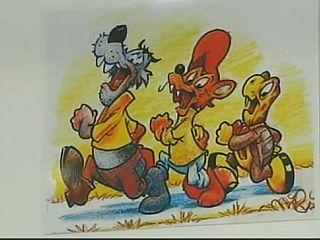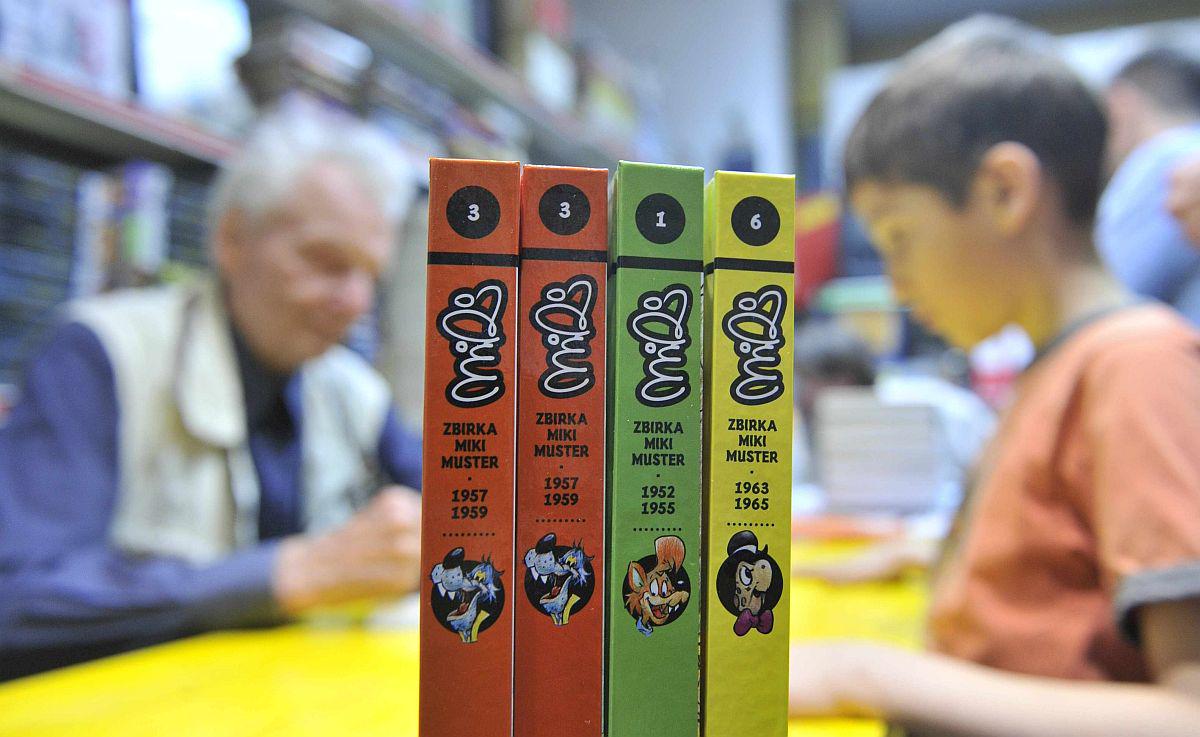


When Miki Muster created the cik cak bunnies, his heart was laughing. He knew that what seemed funny to him would probably be funny to other people too.
Though his real name is Miklavž, he has always been known as Miki. So Miki Muster, the pioneer of Slovenian comics, animator, illustrator, comics writer and film director, recipient of the Silver Order of the Republic of Slovenia for Services for his excellent pioneering work in the field of animated film, a Prešeren Prize and a Victor Award for lifetime achievement, and a seniors world champion in 800 m swimming, has been engaged in creative work for some 60 years.
As a child he dreamed of entertaining others, and on receiving his Prešeren Prize, he expressed the hope that the wishes of everybody present could come true in the same way as his had been fulfilled. The recognition for his achievements came with a delay as if the impression made on an individual by animated figures needed to mature.
His first muse was Snow White
While still at school, Miki Muster decided to make cartoons for children when he grew up. When he first saw Snow White at the cinema, his dream was to finish school as quickly as possible in order to be able to go to America to learn his trade with Walt Disney. But his dreams were thwarted by World War II.
Then after the war the borders were closed, and he remained in Slovenia to pioneer the creation of comic book characters in Europe. It took him decades to find out how to make comics series. The shortage of funds after the war forced him to rationalise his work. Animated cartoons were his dream and the study of sculpture his reality. After compulsory military service, he graduated in sculpture from the Academy of Fine Arts, where he also met his future wife.
The desire for unrestricted creation led him abroad
Back as a student he had often drawn and tried to create cartoon stories, but the art of comics was not well accepted by society in the post-war Yugoslavia. He was snowed under with work but earned only a meagre income due to the prevailing norms for remuneration and high taxation, which forced him to leave the country to find work abroad. Thus he found himself in Germany, where he stayed for 17 years, his wife remaining in Ljubljana, though they visited each other regularly. He also worked for Ljubljana Television throughout his stay in Germany. In 1990, he sold his property in Germany and returned home.
Social involvement through caricature
Political caricature often causes resentment among politicians, as it focuses on their most conspicuous visual characteristic. In Yugoslavia, the caricatured person always had to be shown as nicer than he really was! This is one reason why Muster was particularly saddened by the recent events in Paris, when terrorists attacked the premises of the French magazine Charlie Hebdo, killing twelve of its journalists: it evoked painful memories of a time when he too often feared repression.
He created Zvitorepec (Slyboots) after himself
Miki Muster, a gentle and humorous person, liked to create stories with no violence. In these stories, the good always defeated the evil without resorting to violence. One of his best known works is the strip Slyboots, which was published continuously for 23 years. It featured three main characters: Slyboots, Hungerpot and Thickhead, who were later joined by Joe Peelskin. Slyboots, a fox and the first cartoon character created by Muster, was the slyest and the smartest of the three. The author created this character after himself, giving him the majority of his own human characteristics.
Hungerpot, a wolf, was created by Muster shortly after Slyboots. He was a negative character in the early cartoon series. He became very popular with readers. He was not very clever, but nevertheless always managed to become a positive character. He liked to be surrounded by young and beautiful women. Averse to commitment, he remained single and had no regular job. He lived in an old cottage, the roof of which often collapsed!
Thickhead was the third and final character in the series of strip cartoons about the adventures of Slyboots, Thickhead and Hungerpot.
Joe Peelskin is a small frog wielding a sword which is the fright of the entire world. It is a negative character created after Hungerpot became a positive hero. Joe Peelskin appeared in only five strips; negative characters in other strips are casual characters.
As if one talent alone did not suffice
Miki Muster competed in swimming until he was 23, though he did not even learn to swim until he was 16, this at a children’s summer camp in the Pohorje hills. He then abandoned swimming until he returned from abroad at the age of 65. To start with, he just swam at lot at the seaside, but feeling no fatigue when swimming long distances, he decided to try competing again. So in 2000, at the age of 75, he took part in the world championships in Munich, where he was the winner in the marathon distance, repeating his success the following year at the European championships in France. He ranked second or third in short distance swimming, as leaps and turns which he had never practised before prevented him from performing better.
Danila Mašić, SINFO

































































